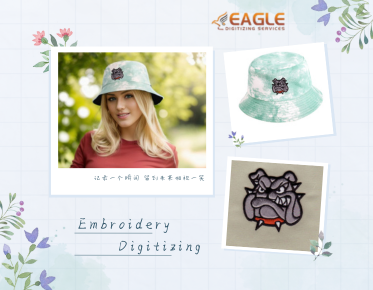Tips for Small Embroidery Fonts to Get the Best Results
Embroidery is a timeless art form that has evolved significantly with the advent of modern technology. One of the most challenging aspects of embroidery is working with small fonts. Achieving clarity and precision in small embroidery fonts requires a blend of skill, the right tools, and a few strategic techniques. Whether you're a seasoned embroiderer or a beginner, understanding the nuances of small font embroidery can greatly enhance the quality of your work.
Understanding the Challenges
Small embroidery fonts present unique challenges primarily due to their size. The smaller the font, the more difficult it is to maintain clarity and readability. Issues such as thread breakage, fabric puckering, and distorted letters are common. Additionally, the choice of fabric and thread can significantly impact the final outcome. To overcome these challenges, it's essential to have a comprehensive understanding of the materials and techniques involved.
Choosing the Right Font
The first step in achieving excellent results with small embroidery fonts is selecting the right font. Not all fonts are suitable for small sizes. Sans-serif fonts are generally preferred over serif fonts because they have cleaner lines and fewer details, which translates better in small sizes. Fonts like Arial, Helvetica, and Verdana are popular choices for small embroidery work.
Optimizing Embroidery Settings
Adjusting your embroidery machine settings is crucial when working with small fonts. Lowering the stitch density can help prevent thread buildup, which can obscure the design. It's also beneficial to reduce the speed of the embroidery machine to allow for more precise stitching. Testing different settings on a scrap piece of fabric can help you find the optimal configuration for your project.
Using Quality Materials
The quality of the materials used in embroidery can significantly affect the outcome. High-quality threads and stabilizers are essential for achieving crisp and clear small fonts. A good stabilizer will prevent the fabric from shifting during embroidery, which is crucial for maintaining the integrity of small designs. Similarly, using a high-quality thread can reduce the likelihood of breakage and ensure a smooth finish.
Digitizing for Small Fonts
Digitizing is a critical step in preparing designs for embroidery. When digitizing small fonts, it's important to simplify the design as much as possible. This means reducing the number of stitches and avoiding overly complex patterns. Embroidery digitizing services, like those offered by Eagle Digitizing, can be invaluable in this process. Their expertise in creating efficient designs helps minimize thread breakage and ensures smooth sew-outs【4:0†source】.
Testing and Adjustments
Before committing to the final embroidery, it's wise to conduct a test run. This allows you to see how the design translates onto the fabric and make any necessary adjustments. Pay attention to the spacing between letters and the overall readability of the text. Making small tweaks at this stage can save time and resources in the long run.
Leveraging Professional Services
For those who find the process of digitizing and embroidering small fonts daunting, professional services can offer a solution. Companies like Eagle Digitizing provide digitizing services that cater to a wide range of needs, ensuring high-quality results with quick turnaround times【4:1†source】. Their skilled digitizers are adept at handling intricate designs and can offer valuable insights into optimizing your embroidery projects.
Future Trends in Embroidery
As technology continues to advance, the embroidery industry is poised for exciting developments. Innovations in digitizing software and embroidery machines are making it easier to achieve high-quality results with small fonts. Additionally, the growing trend of personalized and custom embroidery is driving demand for more sophisticated designs. By staying informed about these trends and continuously honing your skills, you can remain competitive in the ever-evolving world of embroidery.
Embroidery is not just a craft; it's an art form that requires patience, precision, and creativity. By mastering the techniques for small font embroidery, you can expand your repertoire and create stunning, detailed designs that captivate and inspire. Whether you're embroidering for personal enjoyment or professional purposes, the tips outlined here can help you achieve the best possible results.



